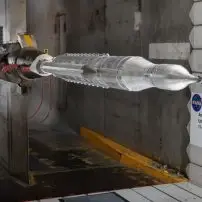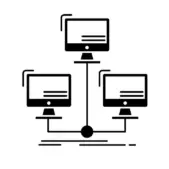Launching a new project without proper discovery can lead to costly missteps, unclear priorities, and wasted effort. A well-run project discovery phase creates the strategic foundation for everything that follows; whether you’re building a customer-facing app, an internal system, or reimagining an entire digital experience.
Discovery helps teams deeply understand the problem they’re solving, uncover hidden needs, and align stakeholders early. Instead of rushing into solutions, thoughtful discovery ensures the final product truly meets user needs, supports business goals, and adapts to real-world constraints.
In this article, we’ll explore how asking the right questions during discovery, and building in flexibility and collaboration, sets your project up for lasting success.

Start with Questions, Not Solutions
It’s tempting to jump into solution mode when a problem is identified. But in discovery, curiosity is more powerful than action.
Whether you’re creating something new or revamping an existing product, start by asking “why” questions:
- Why was this product or process originally created?
- Why is there a desire to change it now?
- What underlying issues have surfaced?
- What outcomes are we trying to achieve, and for whom?
Listening deeply to stakeholders across departments — not just the loudest voices — reveals critical insights that often go unnoticed. It also creates space to challenge assumptions, reset priorities, and uncover opportunities bigger than the initial request.
Discovery is About Rising Above the Problem
Focusing too narrowly on a visible problem can cause teams to miss systemic issues or broader innovation opportunities. Discovery is a chance to zoom out; to understand the ecosystem around the product or experience.
Modern discovery practices typically include:
- Stakeholder interviews (conducted remotely or in hybrid formats)
- Behavioral analytics review (real user data)
- Competitive benchmarking (to uncover both best practices and gaps)
- Collaborative workshops (using digital whiteboards like Miro or FigJam)
For example, when analyzing competitors’ apps or websites, it’s not enough to replicate what’s common.
Ask:
- Why is it designed this way?
- Is there research validating that this is the best approach?
- How does it fit our unique users’ needs?
Discovery isn’t just about documenting what exists; it’s about challenging assumptions and designing a better path forward.
Build a Flexible, User-Centered Foundation
Skipping discovery can feel like speeding up the project; but it usually creates bottlenecks and rework later.
A strong discovery phase lays a flexible foundation by:
- Defining user goals alongside business goals
- Mapping technical realities early
- Aligning success metrics
- Prioritizing based on real user needs, not just internal requests
And importantly, discovery today isn’t a one-time step. In agile and continuous discovery models, teams revisit insights regularly, adjusting based on user feedback, analytics, and evolving business priorities.
Think of discovery like constructing a foundation for a house:
You wouldn’t build new floors or additions without first ensuring the base is stable enough to support them. Similarly, effective digital experiences grow stronger when rooted in validated user understanding, not assumptions.

Modern Discovery Is Collaborative and Remote-Friendly
Discovery today is more inclusive and collaborative than ever.
Remote tools like Miro, MURAL, Figma, and Zoom allow distributed teams to:
- Co-create user journeys and service blueprints
- Conduct real-time affinity mapping from research sessions
- Prioritize features and opportunities with voting exercises
- Storyboard potential solutions rapidly
Workshops can happen over a few focused days or be spread out in sprint-style phases; making it easier to engage busy stakeholders across geographies.
Discovery becomes a shared learning experience, not just a project management step.
Embrace Discovery to Drive Meaningful Change
Effective discovery uncovers real user needs, aligns cross-functional teams, and creates a flexible roadmap for meaningful digital outcomes. It’s not about slowing down; it’s about accelerating the right work.
At UpTop, our UX strategists, researchers, and designers lead discovery sessions that:
- Identify growth opportunities
- Validate critical assumptions
- Clarify technical and organizational constraints
- Align stakeholders on shared goals
Our collaborative, design thinking-driven workshops and remote discovery programs are structured to fuel momentum — not just generate documentation. We help teams surface hidden challenges and design better solutions that drive user satisfaction and business success.
Ready to build a stronger foundation for your next project? Let’s connect.


